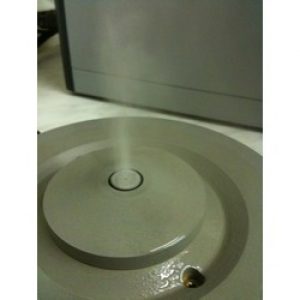Assembly of Thermoplastic Materials
Ultrasonic welding is one of the most widely used processes in the thermoplastic parts industry. It is applied to:
-
Plastics (polyester, polyamide, polypropylene, acrylic, or blends containing at least 50% of these fibers with natural fibers like cotton or viscose)
-
Textiles made from synthetic fibers (woven and non-woven)
-
Textiles made from special fiber materials (carbon fiber, glass fiber, aramid fiber)
Principle
The key features of ultrasonic welding are the cleanliness of the result and the speed of the process. The welding time can be less than one second for spot welding.
The principle of ultrasonic assembly involves combining applied pressure with ultrasonic vibration. Depending on the material’s characteristics, the ultrasonic energy generates intense heat within the material, causing it to melt at the interface. No bonding agent is required. The pressure force can be applied manually or using a cylinder. The vibration amplitude required from the sonotrode depends on the material and the geometry of the sonotrode. Semi-crystalline materials generally require higher amplitudes (25–50 μm) than amorphous materials (10–30 μm).
The required amplitude is usually confirmed through successive trials and fine-tuning of the equipment.
Different Types of Assembly
The choice of sonotrode and anvil profiles allows for a wide range of effects.
Using a flat anvil results in a welding action. It provides enough cutting energy to slice without excessive force, avoiding delamination in materials such as carbon fiber. This type of welding is suitable for materials with a thickness of just a few millimeters.
With a shallow-angle anvil, the system performs cutting or punching only.
If the anvil angle is sharper, it enables cut-sealing, which prevents fraying along textile edges.
Ultrasonic assembly is also used for continuous welding using rotary ultrasonic tools, generally for thin materials. In this case, the welding speed can vary from a few meters to over 200 meters per minute. The ultrasonic system’s power is adjusted according to the material’s feed speed, density, and thickness.
Advantages of This Welding Technology
-
Clean, precise welds and cuts — no burning or fraying
-
Effortless cutting
-
Possibility of marking using specially shaped anvils
-
Fast execution






